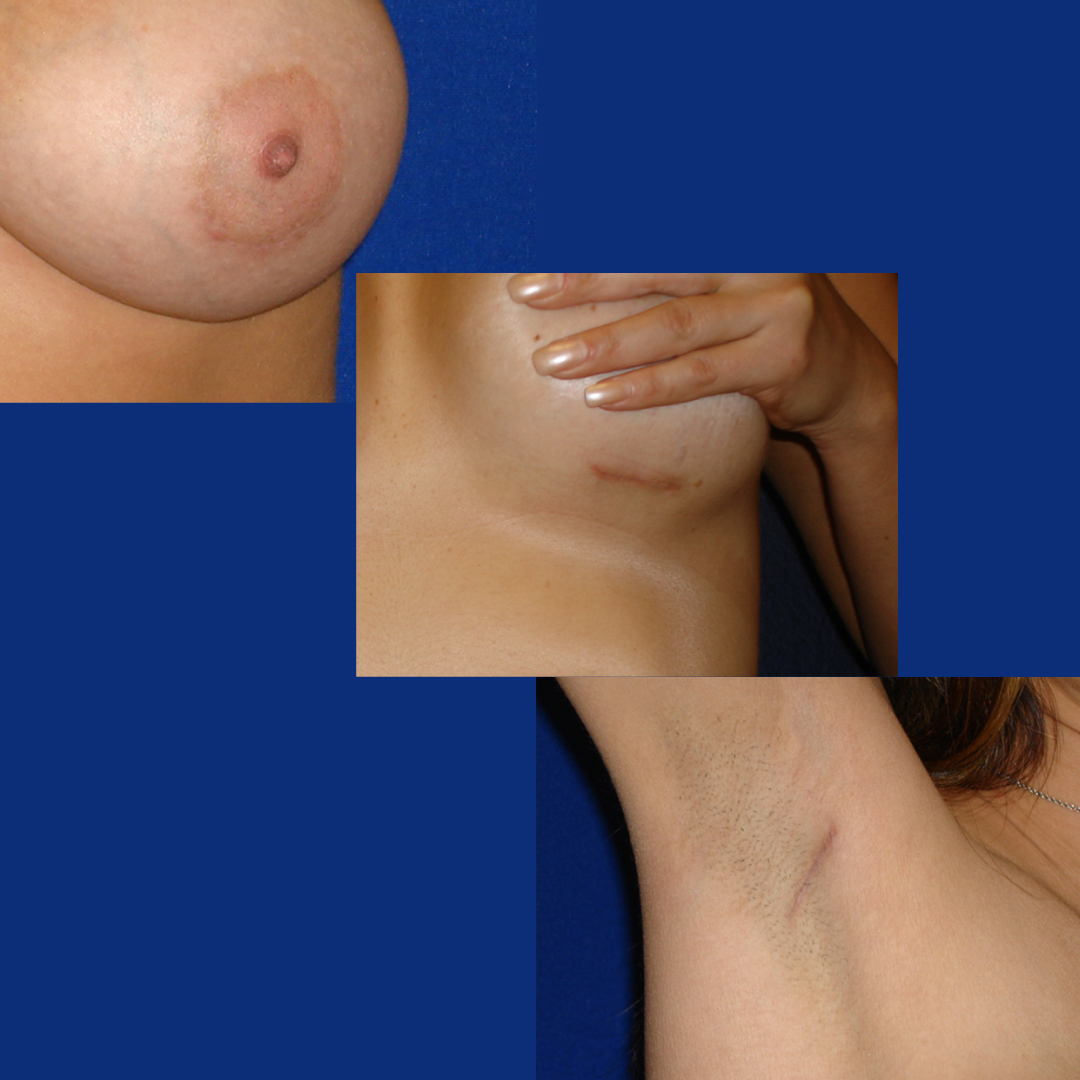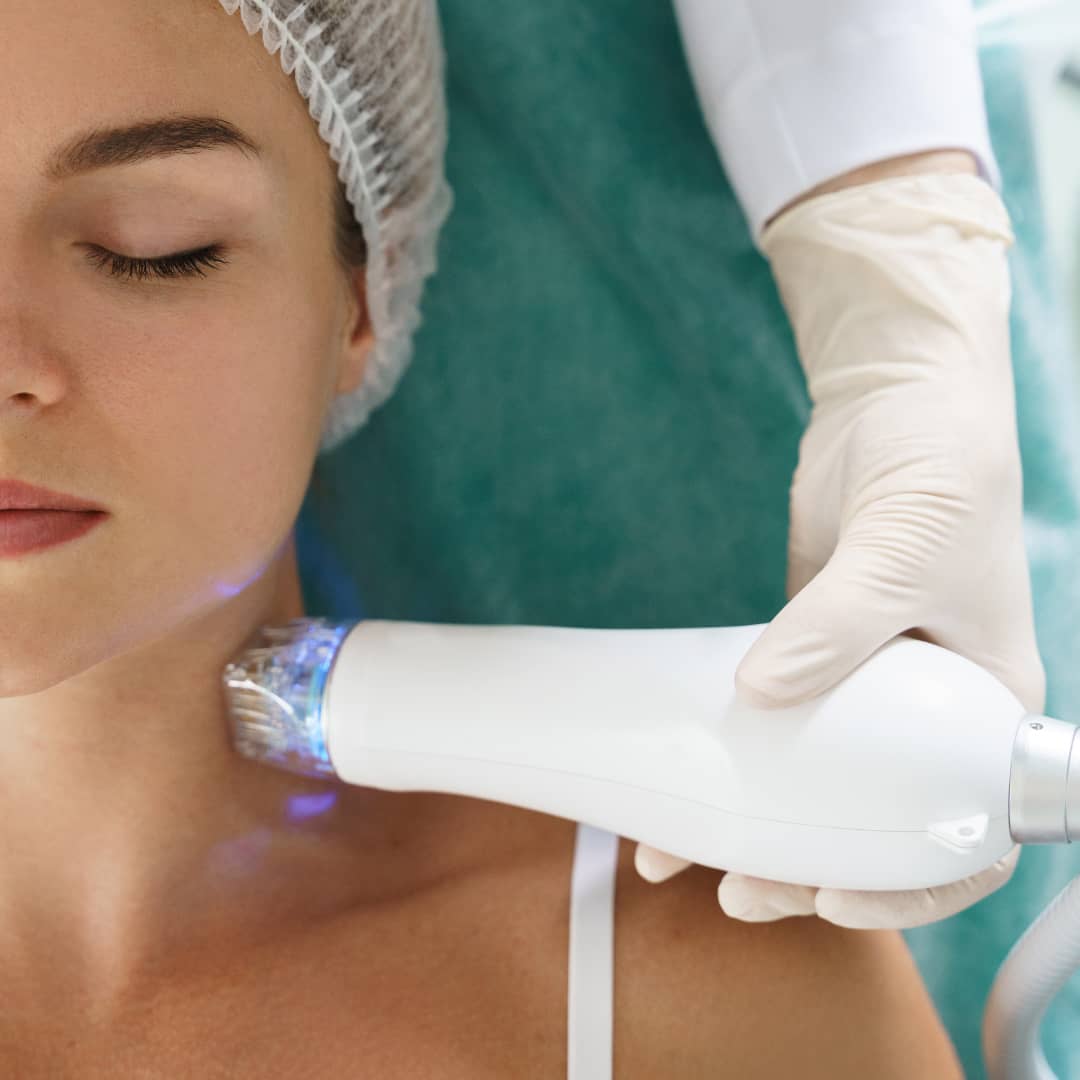


What are the breast enlargement scarring options?
There are three incision approaches which are commonly used in which the breast implant will be inserted:
Below the Breast (Inframammary)
With this incision, the implant is inserted under the breast tissue and inserted through the crease where the breast meets the chest. This approach is the most common and is ideal if your breast is fuller in the lower part so that it overhangs and the scar is hidden by the breast. As larger breasts conceal the inframammary scar well, the scar usually cannot be seen when standing or sitting. This option would be less desirable for those that have smaller or perkier breasts as the scar could be easily seen.
Underarm (Axillary)
This option works very well for those that have smaller, youthful breasts. Those with smaller breasts would not be good candidates for the inframammary scar as there is not enough tissue to conceal the scar. Similarly, the Peri-areolar scar may not be possible if the patient has a small areola diameter. This option is virtually scar-free and conceals the breast enlargement well as the scar would only be visible if you were to lift your underarms.
Around the areola (Peri-areola)
In terms of scarring, this option conceals the breast enlargement as far as possible. Due to the areola’s skin texture and colour in contrast with the adjacent breast skin, this conceals the incision point by a considerable amount and the scar is almost undetectable after just a few weeks. This option is popular for those who have medium to large sized areola diameter.

Treatments for Breast Scars
Women hoping to achieve a natural-looking result should also consider the implant size and position. Similarly, if you are concerned about post-procedure scarring, we recommend either Potenza RF Microneedling or iPixel laser once the body has healed. Potenza uses ultrafine needles and radiofrequency energy to stimulate and rejuvenate skin, improving the look and feel of scarring. Additionally, iPixel helps resurface the skin, improving the appearance of texture and pigmentation caused by scarring.